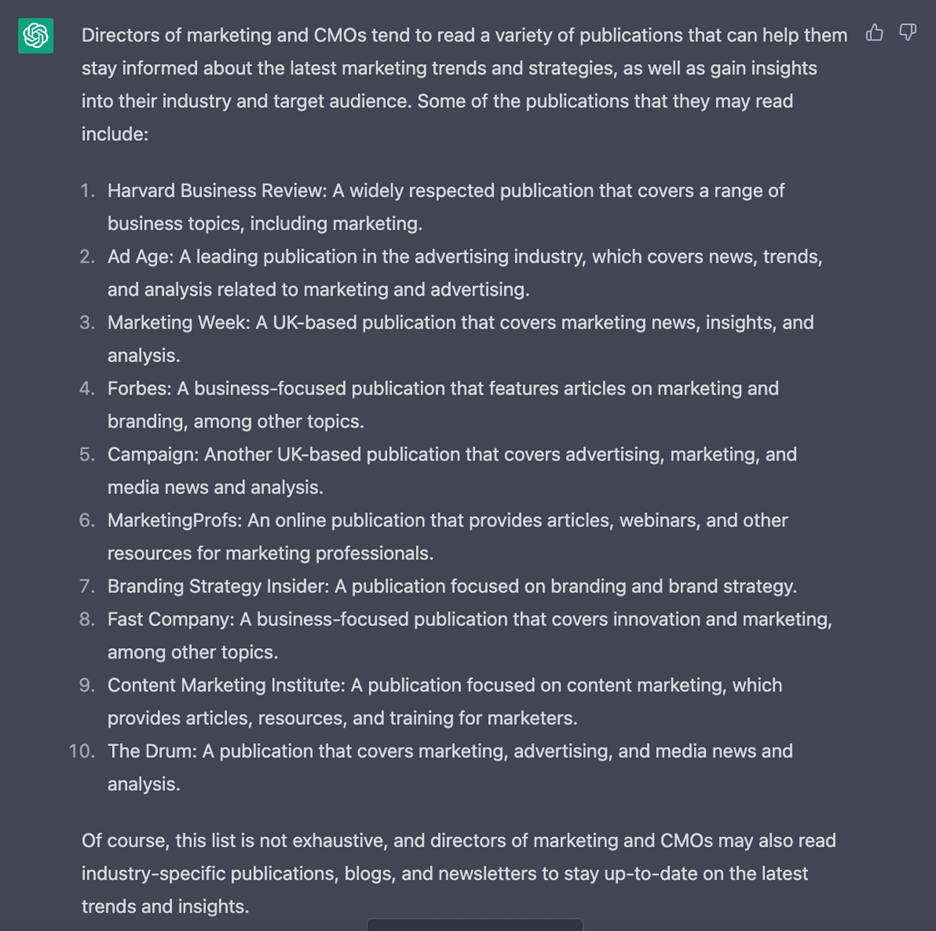You'd never hide your content from your target audience, right?
But I'll let you in on a secret: If you're not publishing content in the publications your target audience is already reading, you might as well be playing an expensive game of hide-and-seek—except your audience isn't going to be seeking.
If you don't meet them where they are, your competitors will, and you'll be left hiding in the archives of the publications your target audience isn't engaging with.
That type of "hide the content" experience happens far too often. It's not intentional, of course, but I've heard countless companies say they want to target only big-name publications.
Although publishing more general articles in those publications can lend credibility and be a valuable component of a more comprehensive content marketing strategy, it's just that—a component. You have to complement those broader, big-name pieces of content with articles that reach your target audience with more specific content in niche publications they engage with regularly.
I've also heard businesses say they want to have a company blog and put all their eggs in that basket. But what's often missing is a strategy for attracting readers to that blog.
If you're not publishing off-site content in the publications your ideal customers are reading, you're missing the opportunity to include educational blog links in those articles to direct those readers to your site for further reading (and potentially nurturing them to the point of becoming leads, then customers).
The good news is that you don't have to stay hidden in the shadows. Some strategic effort can help you reach your ideal target audience online in the publications they're already reading and create an inbound-marketing machine that generates consistent traffic to the owned media on your website.
Reaching Your Content's Target Audience Members via Their Preferred Media
First, you need to nail down where your target audience consumes content. So, what online tools can you use to reach your target audience?
Although there are lots that can help, let's try the new kid on the block: OpenAI's ChatGPT.
In ChatGPT, type in the prompt, "Which publications do [insert target audience] read?" You'll get a response almost instantly that will serve as a great jumping-off point.
I've tried it myself, asking ChatGPT for advice on what marketing directors and CMOs read. As a result, I was able to start compiling a short list of ideas that went from broader choices such as Harvard Business Review to more specialized ones, such as the one you're reading now: MarketingProfs.

Of course, ChatGPT is only a starting point. Once you have your small list in hand, head to Moz. There, you can plug each publication's URL into Moz's competitor research tool to find a list of other publications that are SERP competitors to those sites. Those SERP competitors likely have similar readerships, so you can add them to your growing list.
Next up, go to Semrush's domain overview tool and do the same thing. Scroll down to the main organic competitors to find sites that rank for similar keywords. Voilà! More target audience members at your fingertips.
Finally, give my team's publication quiz a try. It's another tool that can help you identify what publications your target audience reads and whom you should consider pitching content to. Answer some questions, and you'll be on your way to moving your best content from behind the curtain to center stage.
Tips for Identifying Publications Your Audience Loves
Even with all the those efforts, you might still have a little trouble trusting that the publications you find are hitting the mark. Fair enough. It can be difficult to know whether you're heading in the right direction.
The following recommendations should help you feel more confident that you're on solid footing and making good decisions about your publication strategy.
1. Avoid thinking bigger is always better
It's satisfying to have your content printed by a big publication with an international readership—and it gets you lots of street cred. But don't let the "shiny" get in the way of what makes sense for you.
Assuming that a large publication will be a goldmine can backfire. Your messaging might get lost in the mix, or it might simply be uninteresting for the bulk of a mainstream publication's readers. Niche publications can give you much more bang for your buck, particularly if your target audience is immersed in a distinct field such as energy, finance, or medicine.
As an example, our team published two articles in two publications. One was in a well-known publication everyone's heard of; another was in a smaller publication that would appeal only to a limited audience. Upon analysis, we found the article received 42 clicks back to our website from the prominent publication—but no leads. The smaller publication brought us 50 visits and 11 leads. Although both pieces of content got us in front of people, the smaller, more niche publication got us in front of the right people.
2. Adjust your content's tone and attitude for each publication
Selecting a publication isn't the only consideration when offering up off-site content. You must also consider the tone and topic of your content.
Plan to study each publication before pitching. Are most popular articles more straightforward and factual? Or do you notice that humor and even satire are well-received? Do the top articles feature timely elements, or are they more evergreen in nature?
The more you know about how you need to position your insights, the more likely you'll connect with readers. And when you actually connect with those readers, you're more likely to engage them enough to make them want to learn more about you and what you have to say.
3. Vary your topics
Being a one-note writer won't get you far. You'll need to offer your insights on a variety of topics to engage your target audience.
A good rule is to have a combination of trendy and evergreen topics on your content calendar. Sometimes, readers are looking for cutting-edge, new information. Other times, they're on the hunt for more general advice to abide by for the long haul. By mixing it up, you'll satisfy readers' expectations, no matter where they are in their information-gathering journey.
Having trouble coming up with concepts? Browse your target publications' sites. See which articles are getting tons of engagement, such as comments and social shares. Hunt around for themes. Then, take notes on what you find. You'll jog your brain and no doubt come up with some possibilities for applicable material.
* * *
Hiding your content is never wise. Rather than writing something and publishing it somewhere where no one you're targeting will ever see it, ensure your messaging lands squarely in front of the people eager to hear what you have to say.




